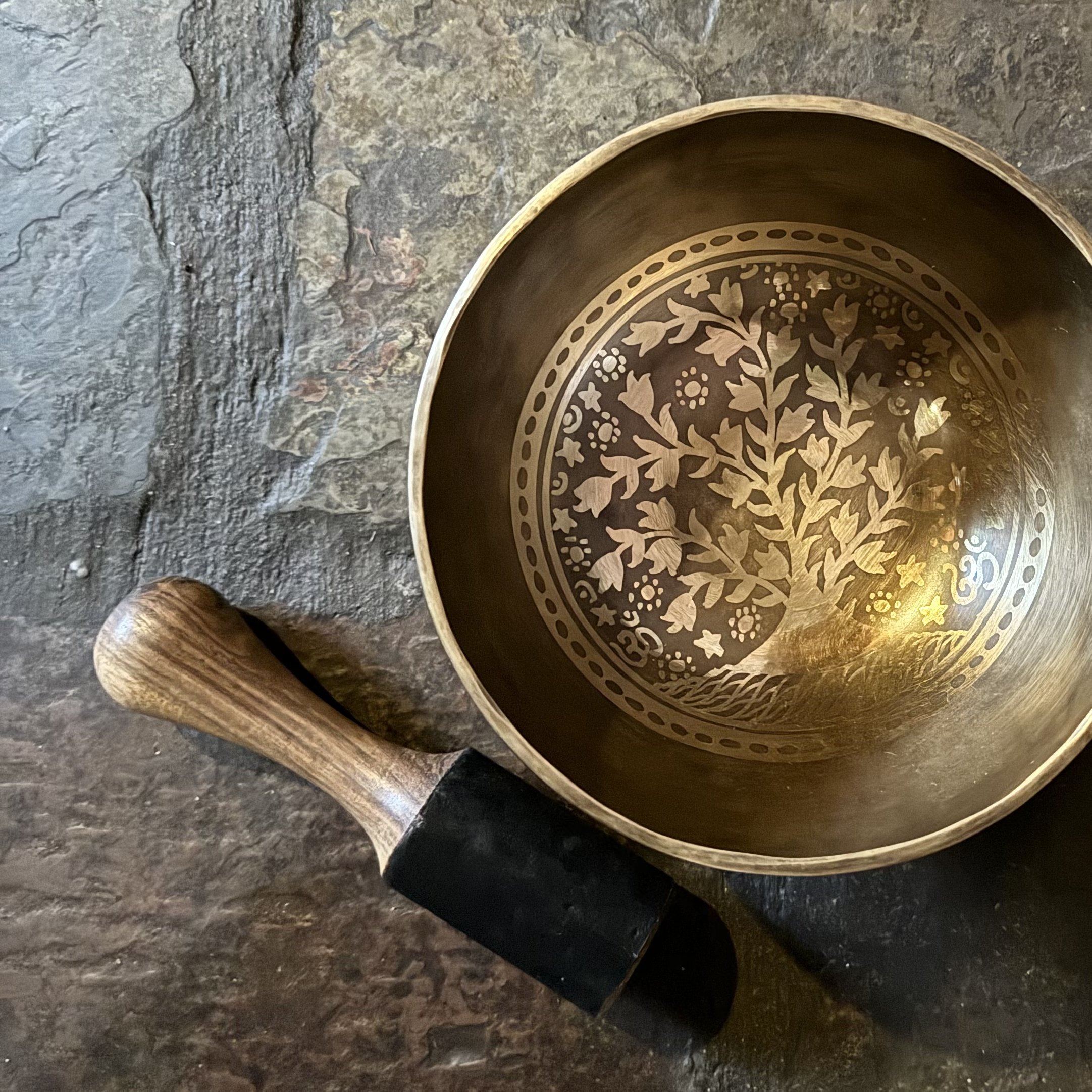 Image 1 of 2
Image 1 of 2

 Image 2 of 2
Image 2 of 2



SB2 (tree of life)
Size: Approx. 7 inch
Includes: Singing bowl, 1 x felted mallet, 1 x cushion base as pictured
Characteristics: Singing bowls are a sacred musical tool, originating in Tibet, and now hand made in the Himalayas. These are a non tuned percussion instrument containing a complexity of harmonies within their sound. They can be struck like a gong, or sung using a mallet.
Size: Approx. 7 inch
Includes: Singing bowl, 1 x felted mallet, 1 x cushion base as pictured
Characteristics: Singing bowls are a sacred musical tool, originating in Tibet, and now hand made in the Himalayas. These are a non tuned percussion instrument containing a complexity of harmonies within their sound. They can be struck like a gong, or sung using a mallet.
Size: Approx. 7 inch
Includes: Singing bowl, 1 x felted mallet, 1 x cushion base as pictured
Characteristics: Singing bowls are a sacred musical tool, originating in Tibet, and now hand made in the Himalayas. These are a non tuned percussion instrument containing a complexity of harmonies within their sound. They can be struck like a gong, or sung using a mallet.
What is a Singing Bowl
Singing bowls create an environment, through the complexity of the sound waves they produce, that allow you to experience multi levels of consciousness. They are a sacred tool every bit a much as they are an outlet for self care, a conduit for engagement and a source of joy. Singing bowls were never intended to be performance instruments and therefore their purpose is not about mastering a sound or technique, but about picking it up and playing it routinely. The playing of your bowl is the outcome.
How to play your Singing Bowl
Hold your bowl on the palm of your hand making sure your fingers are not touching the metal, too much skin touching the bowl will mute the vibration. You can either strike your bowl using the large mallet and allowing it to vibrate within your field, or you can make it sing. In this case the sound is created by the friction between the bowl and the small mallet and the consistency and concentration it takes to make your bowl sing is the original meditative technique for what we now call mindfulness.
Tuning of a Singing Bowl
When you play a Western instrument, for example a piano, you create a sound that has been expertly tuned to a very narrow range of vibrations, which allows for a perfect pitch. This is not so with the singing bowl. Singing bowls are not tuned to any key or pitch - though they do often coincide with a recognisable pitch of the Western scale. The highest quality bowls contain a complexity of harmonies within each strike or song, and each time you play you may create a new dominant pitch. The idea of chakra bowls, a set of bowls tuned to match each note of the Western Scale and alleged frequency of the chakras, is a modern marketing concept, and means the bowl has been tuned to a specific pitch during it's creation.
For this reason I choose not to measure the pitch of my bowls, or include the pitch as part of your purchasing information. Every OMMG bowl contains a complex array of tones which will absolutely align with and realign an array of energies within your field.
Care of your Singing Bowl
Keep your instruments dry and clean as best you can. Please don’t use chemical based cleaning products on your instruments. Their finish contributes to their pitch, and any abrasive substance can damage the surface. Dusting your instruments should be enough, though gentle soapy water will polish them if they need it. Please also note that the bowls, bells and tingsha contain copper and will tarnish over time as a result of their exposure to oxygen. This is a characteristic of these instruments and should be respected and endeared. You can energetically cleanse your instrument by playing it with the conscious intent of cleansing it. You may like to picture light emanating from the sound as you play, this intention, combined with the vibration of the instrument will keep it free of stagnant energy, this is especially important for instruments used in a therapeutic setting or as a tool for vibrational realignment.
